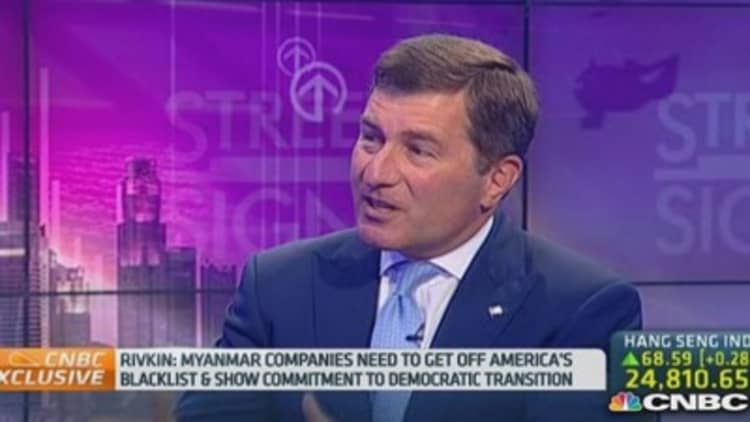Economists expecting a pickup in Western demand to drive Asia's growth recovery have been disappointed thus far.
"There has been a striking breakdown in the relationship between Asia's exports and demand indicators in the U.S./European Union," said Taimur Baig, economist at Deustche Bank.
Historically, a recovery in advanced economies has boosted Asian exports, which has in turn boosted income and investment in the region.
However, Baig points out that data through July show only small pockets of strength, with the region as a whole exporting much less than expected.
Read MoreDid China just announce a new mini-stimulus package?
Data released Monday show exports by trade powerhouse South Korea's dipped 0.1 percent on-year in August, below expectations for a 0.2 percent rise and marking the first annual fall since May.
Trade data from South Korea, the world's seventh-largest exporter, provides an early gauge on the strength of global demand as it's the first major exporting economy to publish trade data each month.
Indonesia's exports, meanwhile, plunged 6 percent on year in July, far worse than forecasts for a 2 percent decline.
Asia's sputtering export engine
One reason an export-led recovery is lacking is that the recovery in the U.S. has been accompanied by unusually weak labor market conditions, said Baig.
Read MoreChinese twin PMIs confirm manufacturing downturn
"The unemployment rate has declined, but some of that is has been due to a large rise in discouraged workers. A large pool of contract workers has emerged, with far less sense of job security than permanent hires. This, in combination with tightened bank lending conditions, in turn can lead to lower incentive to consume," he said.
The situation is even worse in Europe and as long as labor market weakness persists Asian exporters will struggle, he said.

Another headwind is the revival in the U.S. manufacturing sector which has led to some degree of import substitution.
"Surging shale gas and oil production has reduced imports, lowered energy costs, and revitalized long dormant segments of manufacturing. This phenomenon is not going to threaten large chunks of Asian exports given the sustained comparative advantage and economies scale enjoyed by the region's manufacturers, but nevertheless this marks a notable reversal of a multi-decade trend of production off-shoring," Baig said.
Read MoreUS factory activity expands at fastest pace in over 4 years in Aug: Markit
Finally, a marked rise in trade restrictions constrained global trade growth in recent years.
1,185 trade-restrictive measures have been recorded since late 2008, only a fifth of which were removed by May 2014, according to the World Trade Organization (WTO),
Trade outlook bleak
Louis Kuijs, chief China economist at RBS observed a similar trend, noting that economic growth in Asia could disappoint in the coming months due to weaker-than-expected global trade developments.
"While we still expect global trade to continue to grow at a reasonable pace in the coming six months, we expect no significant pick-up in growth of global demand anymore for the rest of the year," he said.
Read MoreIndia's growth speeds up in after-glow of Modi's triumph
In its July World Economic Outlook Update, the International Monetary Fund scaled back its projection for global trade growth for 2014 to 4.0 percent from 4.3 percent. While still 0.9 percentage points faster than in 2013, it's a significantly smaller acceleration than expected at the start of this year, Kuijs said.
Baig too noted his forecasts for Asia's economic growth could be at risk.
"Will any of these headwinds disappear soon? We doubt it. As the [Federal Reserve] Chairperson Yellen pointed out at her address in Jackson Hole last week, ongoing shifts in the structure of the labor market and the possibility that the global financial crisis has caused persistent changes in the labor market's functioning will continue to act as brakes to employment and income," he said. "Import substitution may rise in the near term, and there is little sign of trade restrictions abating."


